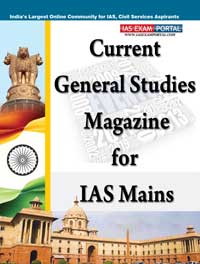(HOT) UPSC Current Affairs 2025 PDF
NEW! The Gist (NOV-2025) | E-BOOKS
Current General Studies Magazine: "India Drinks and Smokes Less Now" December 2015

Current General Studies Magazine (December 2015)
General Studies - III "Geography Based Article" (India Drinks and Smokes Less Now)
It is among the highest consumers of smokeless forms of tobacco, NFHS data shows
The preliminary findings from National Family Health Survey (NFHS-4) released last week have given anti-tobacco campaigners a reason to smile. The survey has found that across the board, people — both men and women — in India are smoking less than they were a decade ago. Not just tobacco, even alcohol consumption among Indians has fallen.
According to the NFHS-4 data, in the 13 States surveyed, tobacco use among men has fallen from 50 per cent in 2005-06 to 47 per cent in 2015. Similarly, alcohol consumption among men has fallen from 38 per cent to 34 per cent. Over the last decade, consumption of alcohol among men has fallen in Madhya Pradesh, Bihar, Uttarakhand, Haryana, West Bengal and Meghalaya.
The data comes at a time when India is on the verge of implementing stricter tobacco control laws. From April 1, 2016, the Indian government will be implementing ‘plain packaging’ as directed by the Allahabad High Court, following a writ petition on the matter.
Plain tobacco packaging
The public health community has been demanding implementation of ‘plain tobacco packaging’ — which means standardised packaging of tobacco products without any exclusive branding like colours, imagery, corporate logos and trademarks.
The laws will only allow the manufacturers to print the brand name in a mandated size and font. Australia, the first country to implement these laws, had passed the plain packaging legislation in November 2011.
According to the Global Adult Tobacco Survey (GATS) India report, smoking kills over one million people in the country annually and is the fourth leading cause of non-communicable diseases (NCD) such as cancer and heart diseases, which account for 53 per cent of all deaths in India. According to the Health Ministry, the economic burden of tobacco consumption is around Rs.1,04,500 crore per annum.
India became a party to the WHO Framework Convention on Tobacco Control (FCTC) on February 27, 2005. Since then India has implemented a series of measures leading to the current status of increased social awareness. Soon after signing the WHO FCTC, smoking was completely banned in many public places and workplaces in India — with the new law permitting establishments to create smoking zones within restaurants, airports and hotels having 30 or more rooms.
The Indian government has also clamped down on promotion of tobacco consumption, with a complete ban on advertising under the Cigarettes and Other Tobacco Products (Prohibition of Advertisement and Regulation of Trade and Commerce, Production, Supply and Distribution) Act, 2003 (COTPA).
Production too falls
It is no surprise that despite an increase in women smokers, the overall consumption of cigarettes has fallen in India. As per the health ministry statistics, 93.2 billion sticks were consumed in 2014-15, nearly 10 billion less than in 2012-13. The production of cigarettes too fell from 117 billion to 105.3 billion sticks in the same period. However, there is a caveat. While the decline in tobacco consumption is worth a pat on the back, one needs to factor in that India is among the highest consumers of smokeless forms of tobacco — zarda , gutka, and so on . SLT use is an imminent public health problem, which is contributing to high disease burden in India. It is a “unique” tobacco product due to its availability in myriad varieties, easy access, and affordability, especially for adolescents. It has been studied to be a “gateway product and facilitates initiation,” writes Dr. Monica Arora in a 2012 paper on consumption of SLT in India.
According to ‘Economics of Non-Communicable Diseases in India’, a 2014 report by the World Economic Forum and the Harvard School of Public Health, tobacco use has been cited as a risk factor for cardiovascular diseases and many types of cancer. In fact, research finds that tobacco-related cancers constitute roughly 40 per cent of all male cancers in India.
Smoking also significantly increases the risk of tuberculosis, and several studies using mortality data from the 1990s through early 2000s have shown tuberculosis to be the single biggest cause of death among smokers in India.

